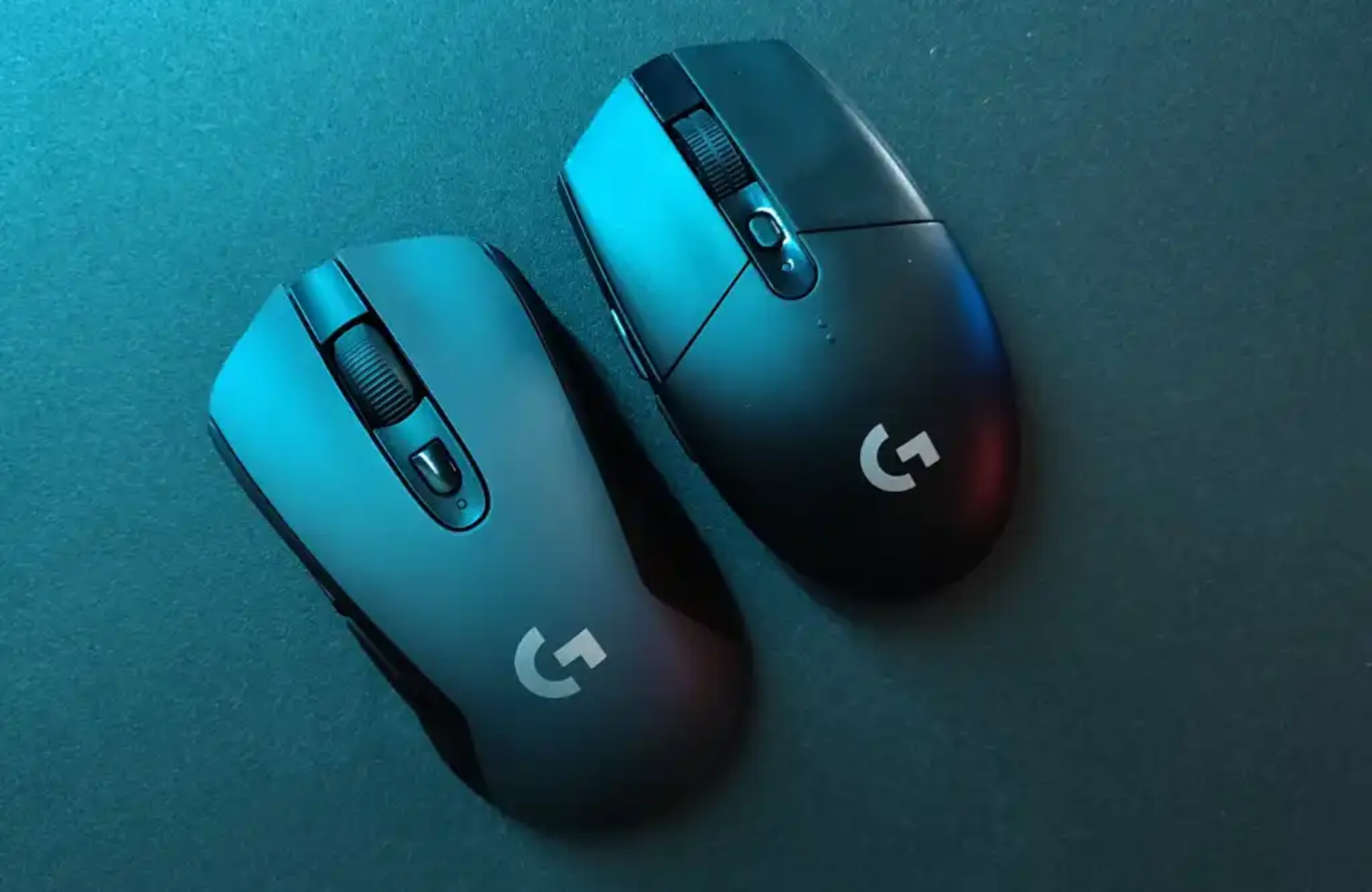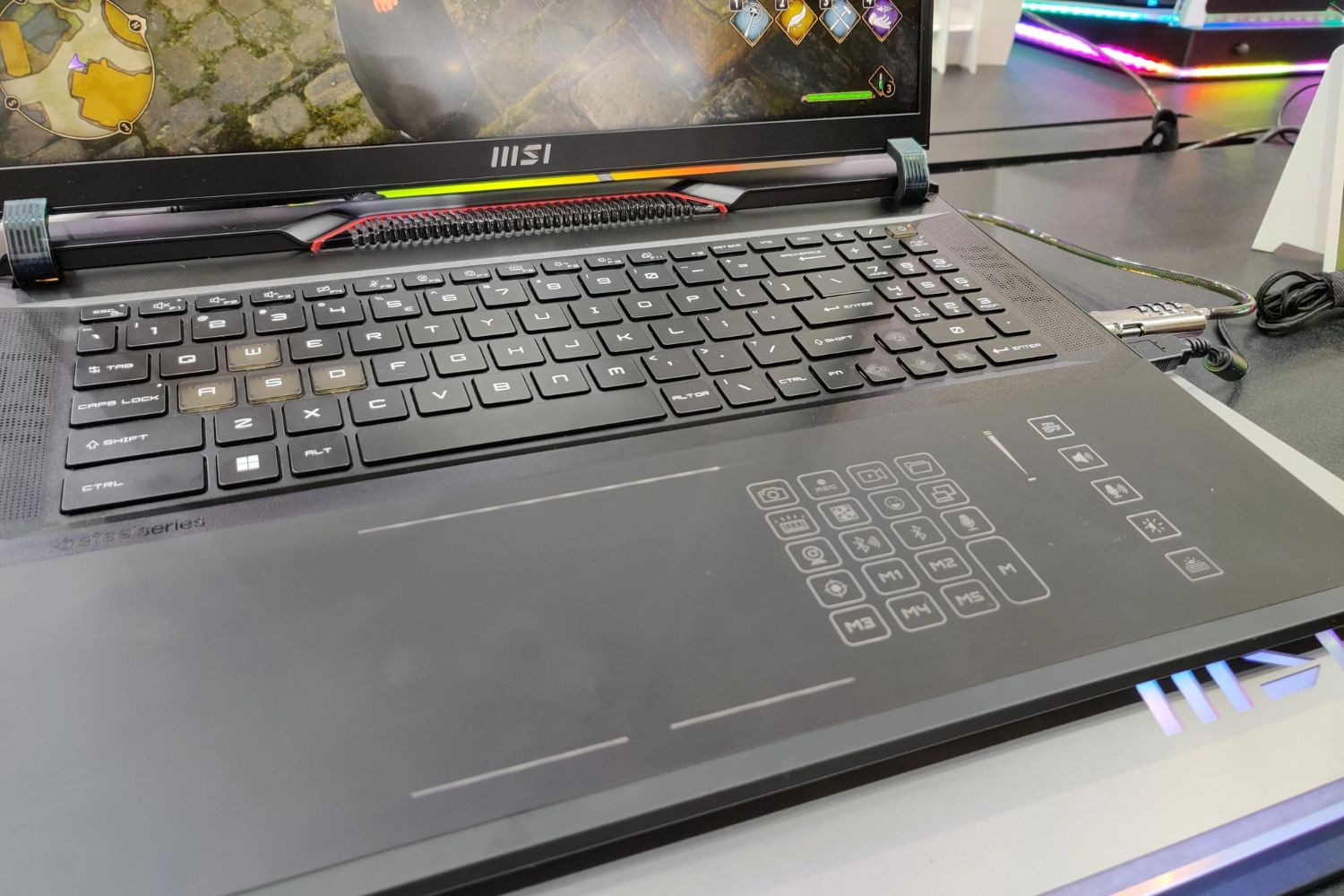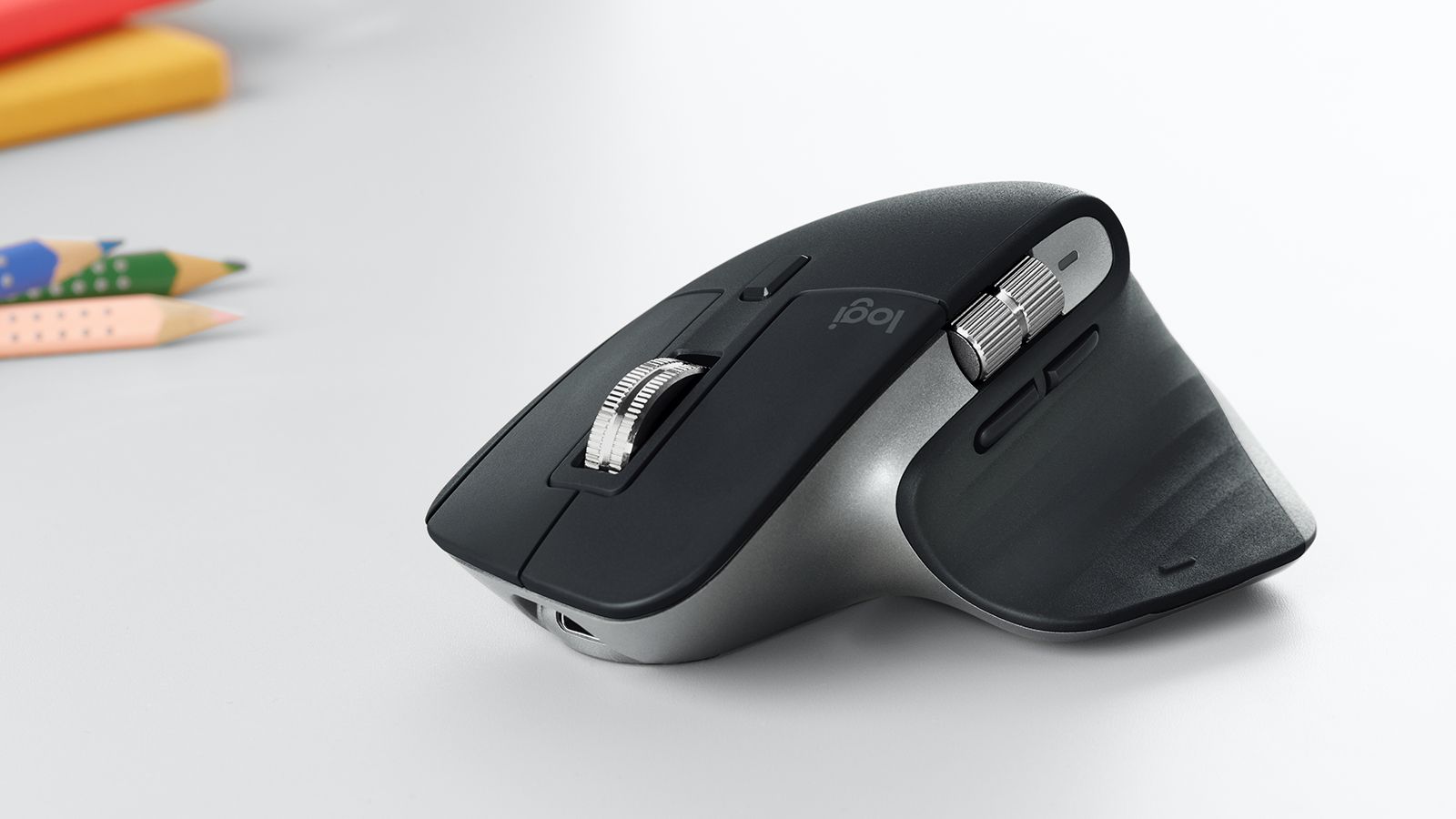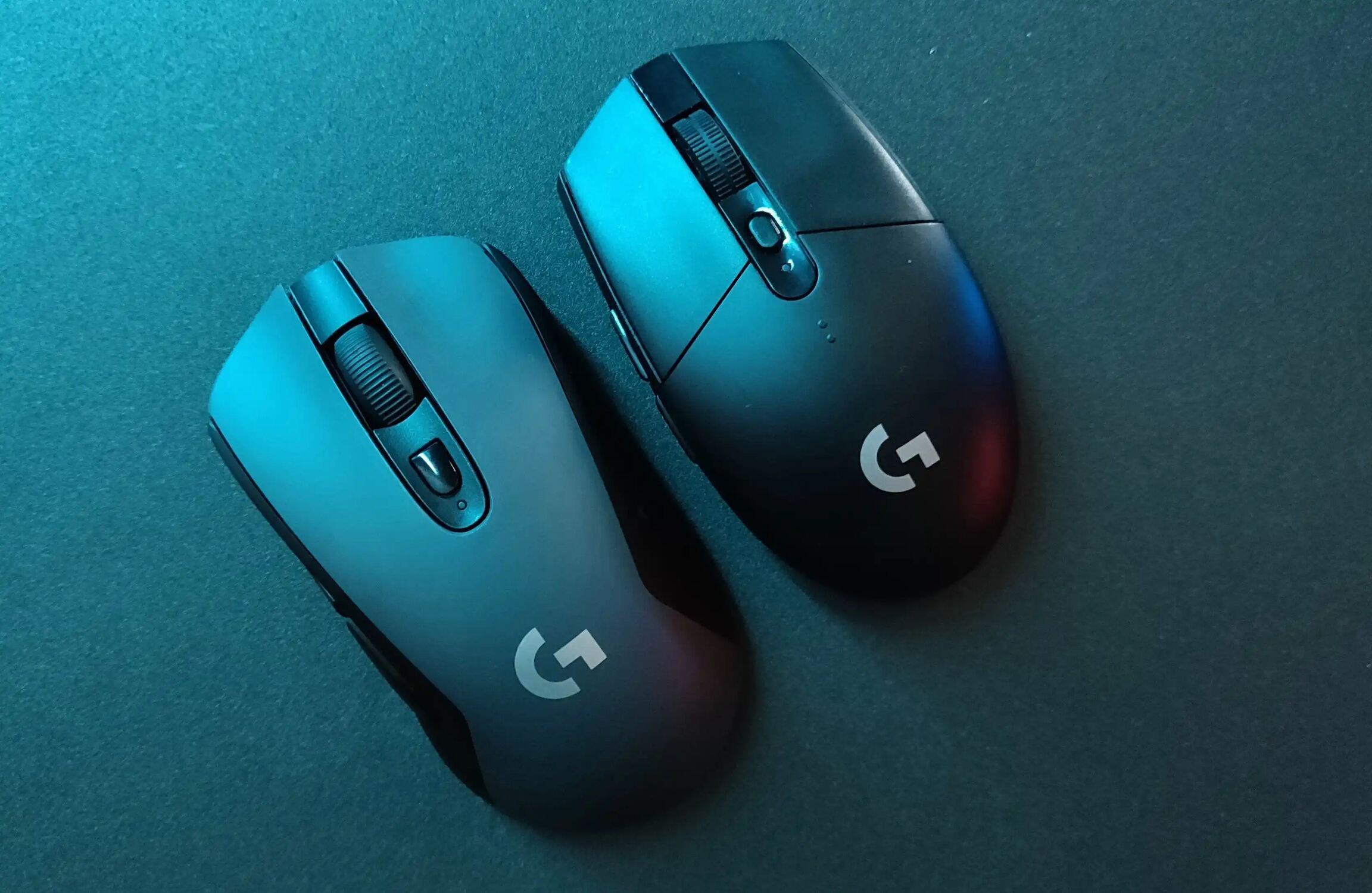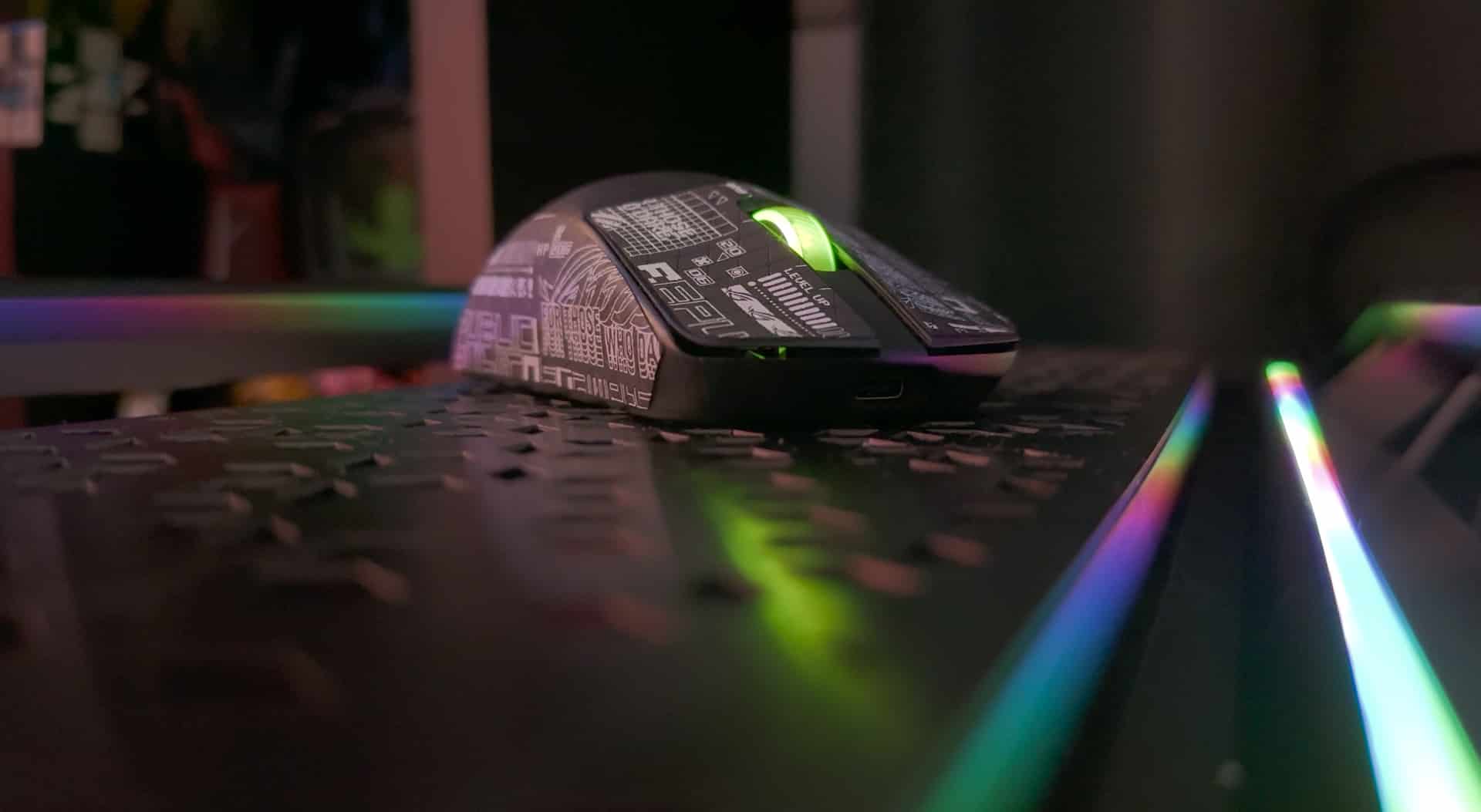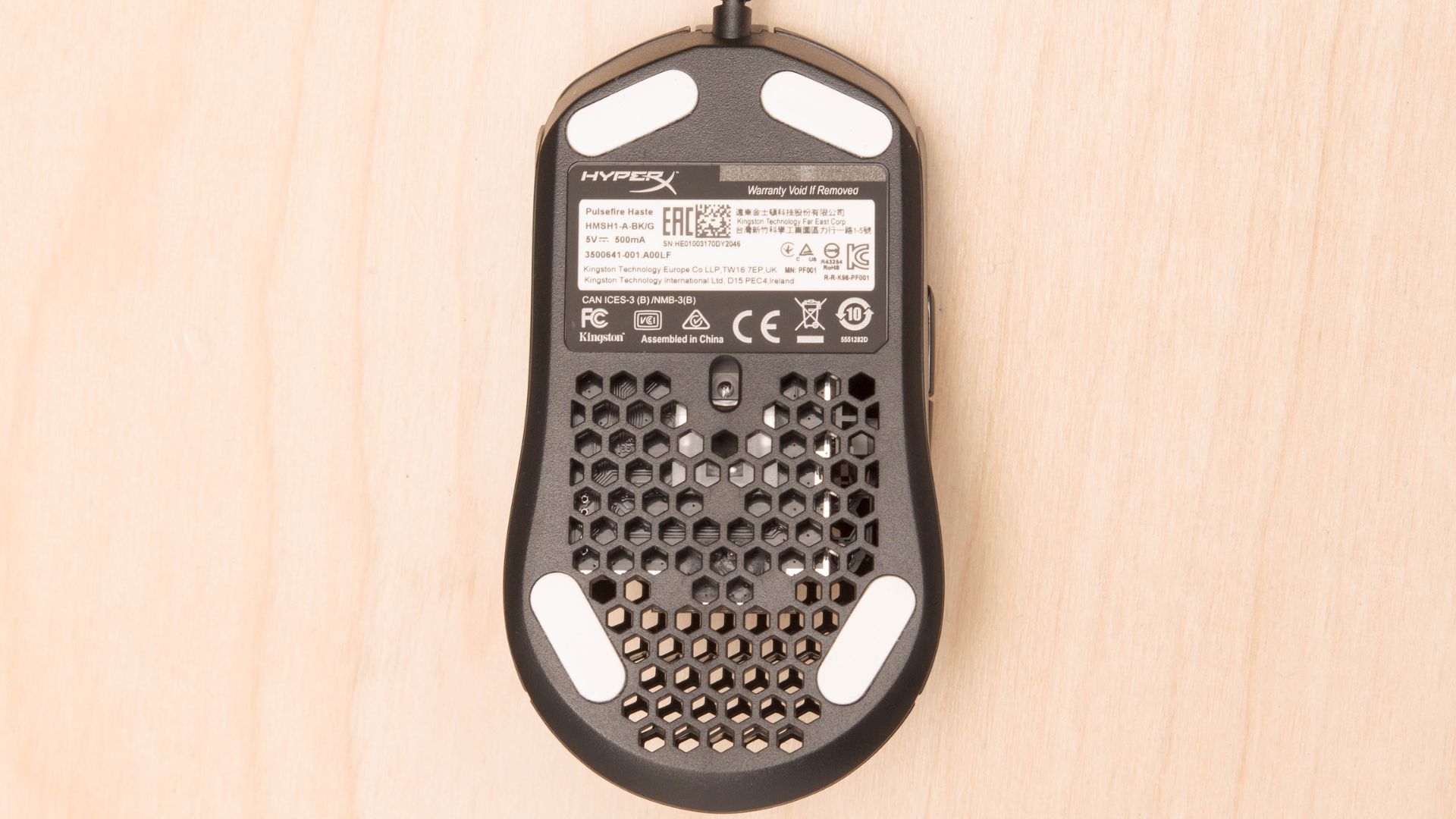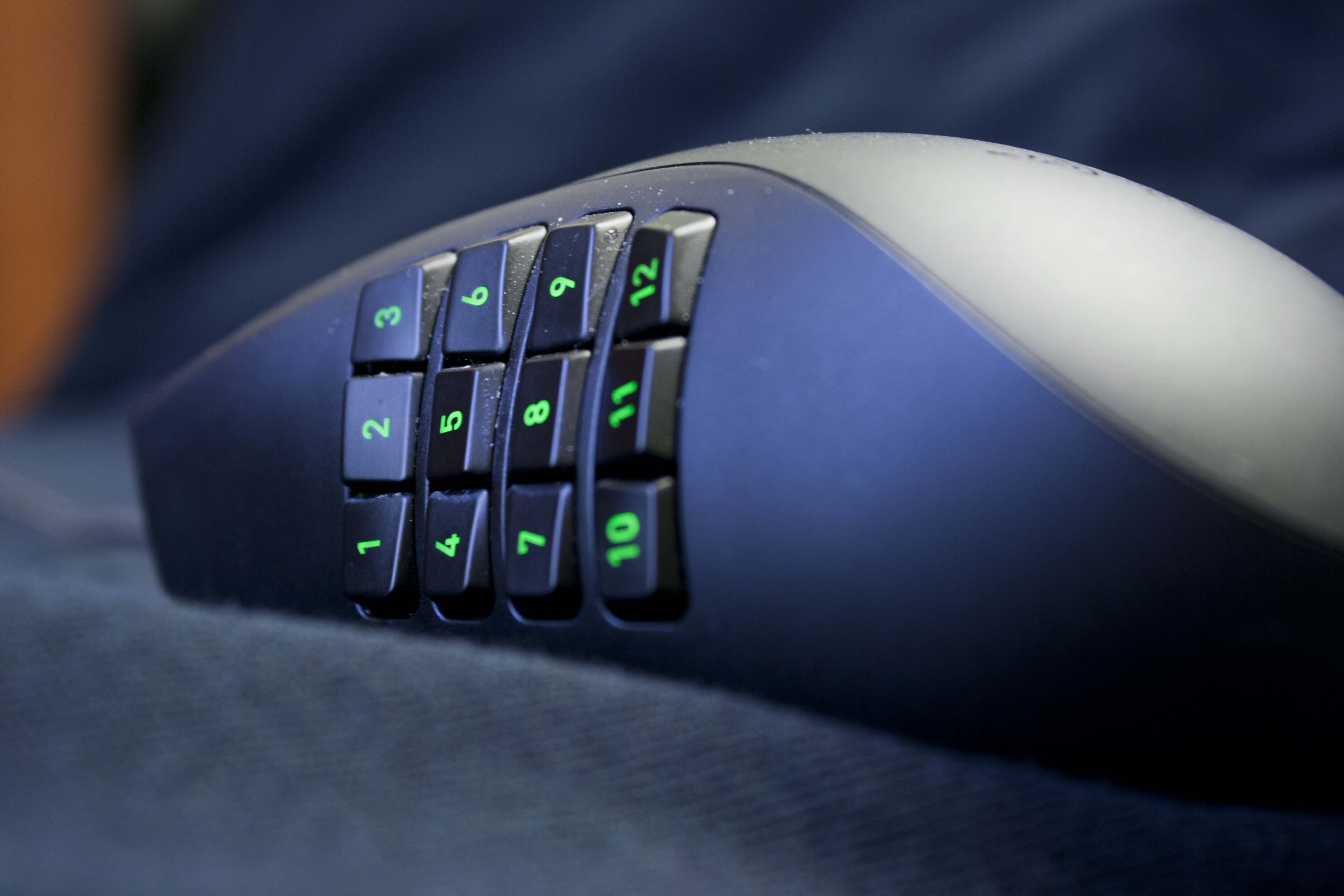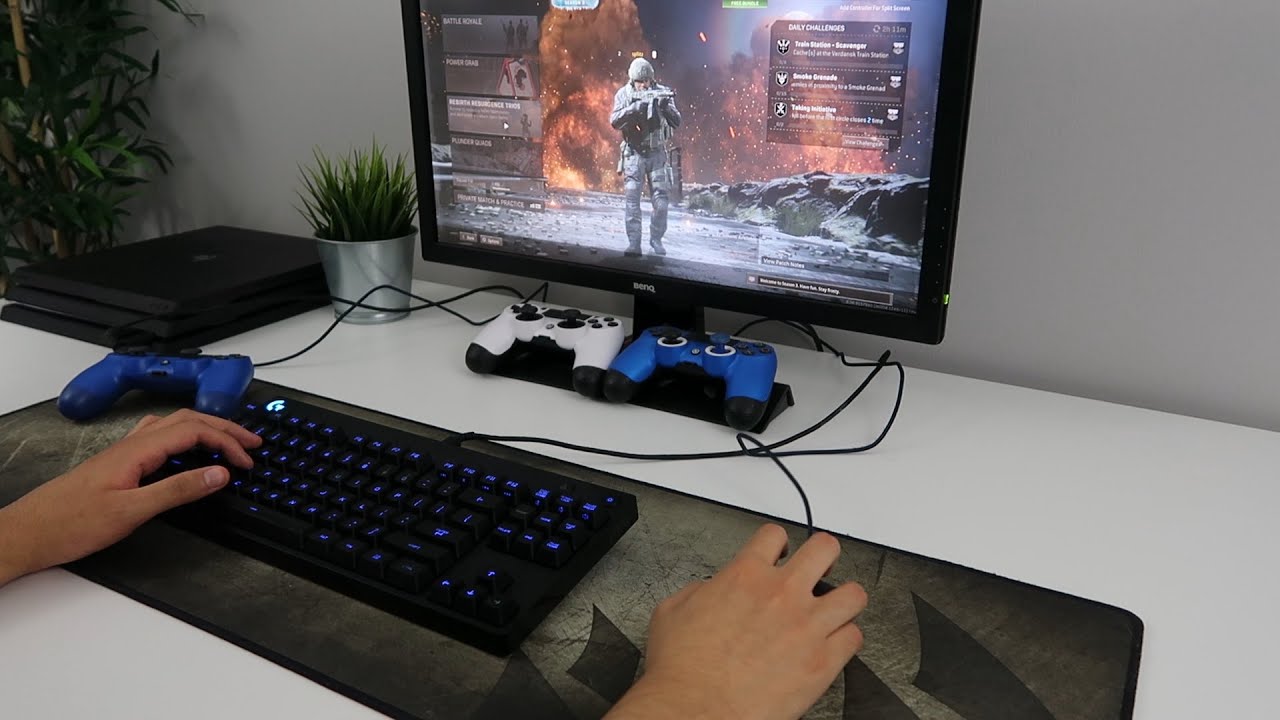Introduction
Welcome to the world of gaming, where precision and accuracy can make all the difference in your performance. As a gamer, you understand the critical role your mouse plays in executing swift and accurate movements. Whether you're navigating a virtual battlefield or fine-tuning your aim in a first-person shooter, the accuracy of your gaming mouse can significantly impact your gameplay experience.
In this guide, we'll delve into the essential aspects of testing your gaming mouse accuracy. By understanding the intricacies of mouse accuracy and employing the right testing methods, you can optimize your gaming setup for peak performance. From setting up your testing environment to analyzing the results, we'll walk you through the entire process, empowering you to enhance your mouse accuracy and elevate your gaming prowess.
So, if you're ready to take your gaming skills to the next level by ensuring your mouse is performing at its best, let's dive into the world of gaming mouse accuracy testing. Whether you're a seasoned pro or a newcomer to the gaming scene, this guide will equip you with the knowledge and tools to fine-tune your mouse accuracy and elevate your gaming experience.
Understanding Mouse Accuracy
Mouse accuracy is a critical factor that directly influences your gaming performance. It refers to the precision and consistency with which your gaming mouse translates your physical movements into on-screen actions. A highly accurate gaming mouse ensures that your cursor or crosshair moves exactly as intended, allowing you to execute precise maneuvers and target enemies with unparalleled precision.
When evaluating mouse accuracy, it’s essential to consider two primary aspects: DPI (dots per inch) and polling rate. The DPI setting determines the sensitivity of your mouse, affecting how far the cursor moves in response to physical movement. A higher DPI value results in more significant on-screen movements for the same physical hand motion, while a lower DPI setting provides finer control with smaller on-screen movements. The polling rate, measured in hertz (Hz), determines how often the mouse reports its position to the computer. A higher polling rate leads to more frequent updates on the cursor’s position, enhancing responsiveness and accuracy.
Furthermore, the type of sensor in your gaming mouse significantly impacts its accuracy. Optical sensors utilize LED or infrared light to track movement, offering precise tracking on various surfaces. On the other hand, laser sensors provide high DPI settings and work well on smooth or glossy surfaces, making them suitable for specific gaming preferences.
Understanding these fundamental aspects of mouse accuracy empowers gamers to make informed decisions when selecting or optimizing their gaming mice. By comprehending the intricacies of DPI, polling rates, and sensor types, you can fine-tune your gaming setup to align with your preferred playstyle and maximize your in-game performance.
Choosing the Right Testing Method
When it comes to assessing the accuracy of your gaming mouse, selecting the appropriate testing method is crucial for obtaining reliable and actionable results. Different testing methods cater to distinct aspects of mouse performance, allowing you to gain insights into tracking precision, sensor responsiveness, and overall consistency. Here are some popular testing methods to consider:
- Mouse Accuracy Software: Utilizing specialized software designed for mouse accuracy testing can provide comprehensive insights into various performance metrics. These programs often offer features such as tracking analysis, consistency measurements, and customizable testing scenarios, enabling you to evaluate your mouse’s accuracy across different usage scenarios.
- In-Game Testing: Many gaming titles offer built-in tools or settings that allow players to assess mouse accuracy within the game environment. These in-game testing options often include target tracking, sensitivity adjustments, and precision challenges, providing a practical and immersive way to gauge your mouse’s performance during actual gameplay.
- Physical Testing Tools: Using physical tools such as mouse pads with precision grids, input lag measurement devices, or motion tracking sensors can offer tangible data regarding your mouse’s accuracy. These tools facilitate real-world assessments of tracking consistency, sensor responsiveness, and the impact of environmental factors on mouse performance.
When choosing a testing method, consider the specific aspects of mouse accuracy you aim to evaluate. Whether you prioritize tracking precision, responsiveness during fast movements, or consistency across different surfaces, selecting the right testing method aligns with your assessment goals. Additionally, leveraging multiple testing methods can provide a comprehensive understanding of your gaming mouse’s performance, allowing you to address any potential limitations and optimize its accuracy for diverse gaming scenarios.
By carefully considering the available testing methods and their relevance to your gaming preferences, you can embark on a systematic approach to assess and enhance your gaming mouse’s accuracy, ultimately elevating your gaming experience to new heights.
Setting Up Your Testing Environment
Creating an optimal testing environment is essential for conducting accurate and meaningful assessments of your gaming mouse’s performance. By establishing a controlled and consistent testing environment, you can minimize external variables and focus on evaluating the core aspects of mouse accuracy. Here are key considerations for setting up your testing environment:
- Clear and Adequate Workspace: Ensure that your gaming area provides ample space for unrestricted mouse movement. Clear any clutter and obstructions to create a clean and unobstructed workspace, allowing you to maneuver your mouse freely during testing.
- Consistent Surface: Choose a mouse pad or surface that offers consistent traction and minimal friction. A high-quality gaming mouse pad with a smooth and uniform texture can contribute to reliable tracking and consistent mouse movements, enhancing the accuracy testing process.
- Optimized Lighting Conditions: Adequate lighting is crucial for maintaining visual clarity and ensuring that your mouse’s sensor functions optimally. Avoid excessively bright or dim lighting, as it can affect sensor performance and introduce inconsistencies in tracking accuracy.
- Stable and Ergonomic Seating: Position yourself in a comfortable and stable seating arrangement that supports proper posture and wrist positioning. Maintaining ergonomic alignment during testing sessions can contribute to consistent mouse control and accurate movements.
- Calibrated Display Settings: Verify that your monitor’s resolution, refresh rate, and display settings are optimized for gaming. Consistent visual feedback is vital for assessing mouse accuracy, and calibrated display settings ensure that your on-screen movements accurately reflect your physical input.
By attending to these environmental considerations, you can create a conducive testing space that facilitates accurate and reliable assessments of your gaming mouse’s performance. Consistency and control within the testing environment enable you to focus on the nuances of mouse accuracy, identify potential areas for improvement, and optimize your gaming setup for enhanced precision and responsiveness.
Conducting Accuracy Tests
Once you’ve established an optimal testing environment, it’s time to conduct accuracy tests to evaluate your gaming mouse’s performance across critical metrics. The following steps outline a systematic approach to conducting comprehensive accuracy tests:
- Tracking Precision: Initiate tests that focus on tracking precision by moving the mouse across different areas of the screen, tracing intricate patterns, and executing controlled movements to assess how accurately the cursor or crosshair follows your input.
- Speed and Responsiveness: Evaluate the mouse’s responsiveness at varying speeds, from slow and deliberate movements to swift and dynamic actions. Assess how the mouse registers and translates your movements into on-screen actions, ensuring consistent responsiveness across different speeds.
- Surface Compatibility: Test the mouse’s accuracy on various surfaces, including different types of mouse pads or direct desk surfaces, to gauge its performance consistency and adaptability to diverse environmental conditions.
- Sensor Calibration: If your gaming mouse offers customizable sensor settings, conduct tests to determine the optimal DPI and polling rate configurations that align with your preferred sensitivity and tracking precision.
- Customized Scenarios: Create custom testing scenarios based on your typical gaming activities, such as precise aiming in first-person shooters, rapid cursor movements in real-time strategy games, or intricate maneuvers in role-playing titles. Tailoring tests to mimic your gaming habits provides insights into real-world accuracy performance.
Throughout the testing process, document your observations regarding tracking consistency, cursor deviation, input lag, and overall precision. Utilize any available software tools or performance metrics provided by your gaming mouse to capture and analyze data, enabling you to identify patterns and areas for improvement.
By systematically conducting accuracy tests across these key areas, you can gain a comprehensive understanding of your gaming mouse’s performance characteristics, pinpoint potential areas for optimization, and make informed adjustments to enhance its accuracy and responsiveness.
Analyzing Your Results
Once you’ve completed the accuracy tests, the next crucial step is to analyze the results to gain actionable insights into your gaming mouse’s performance. Effective analysis of the testing data empowers you to identify strengths, pinpoint areas for improvement, and make informed adjustments to optimize your mouse’s accuracy. Here’s how to approach the analysis of your accuracy test results:
- Tracking Consistency: Review the data related to tracking precision and cursor movement consistency across different testing scenarios. Identify any instances of erratic or inconsistent tracking, as well as patterns of reliable and accurate cursor placement.
- Responsiveness Metrics: Assess the responsiveness of your gaming mouse at varying speeds and movement intensities. Look for trends in responsiveness, including any delays or discrepancies in on-screen cursor movements compared to your physical input.
- Surface Adaptability: Evaluate how your gaming mouse performs across different surfaces and determine whether certain textures or materials impact its accuracy. Identify any surface-related variables that influence tracking consistency and responsiveness.
- Sensor Calibration Optimization: If you conducted tests to calibrate the mouse’s sensor settings, analyze the impact of different DPI and polling rate configurations on tracking precision and responsiveness. Determine the optimal sensor settings that align with your preferred gaming experience.
- Real-World Application: Consider how the testing results correlate with your actual gaming experiences. Identify specific gaming scenarios or genres where your mouse’s accuracy excels or falls short, providing insights into its performance during gameplay.
Utilize any available software tools or performance analytics provided by your gaming mouse to aid in the analysis process. Visual representations of tracking data, input latency measurements, and heatmaps of cursor movements can offer valuable perspectives on your mouse’s performance characteristics.
By thoroughly analyzing the results of your accuracy tests, you can develop a nuanced understanding of your gaming mouse’s strengths and weaknesses, paving the way for targeted optimizations and adjustments to enhance its accuracy and responsiveness in diverse gaming scenarios.
Improving Your Mouse Accuracy
Armed with a comprehensive understanding of your gaming mouse’s performance from the analysis of accuracy test results, you’re well-positioned to implement targeted strategies to enhance its accuracy and responsiveness. Consider the following approaches to improve your mouse accuracy:
- Optimize Sensor Settings: Based on the analysis of sensor calibration tests, fine-tune your mouse’s DPI and polling rate settings to align with your preferred sensitivity and tracking precision. Experiment with different configurations to find the optimal settings that enhance accuracy without sacrificing responsiveness.
- Surface Selection: Choose a high-quality gaming mouse pad that offers consistent traction and minimal friction to optimize tracking accuracy. Consider the surface material and texture that best complements your gaming mouse’s sensor type, ensuring reliable performance across various gaming scenarios.
- Ergonomic Adjustments: Evaluate your seating and wrist positioning during gaming sessions to ensure ergonomic alignment that supports precise mouse control. Maintaining proper posture and wrist ergonomics can contribute to steady and accurate cursor movements, enhancing overall mouse accuracy.
- Software Customization: Explore the customization options provided by your gaming mouse’s software to tailor button configurations, sensitivity profiles, and tracking behavior to suit your gaming preferences. Customizing software settings can optimize the mouse’s performance for specific gaming genres and playstyles.
- Practice and Adaptation: Engage in deliberate practice sessions to acclimate to any adjustments made to your gaming mouse settings. Adaptation to optimized sensor configurations and surface characteristics through consistent practice can refine your muscle memory and enhance your ability to leverage the improved accuracy of your gaming mouse.
Continuously monitor the impact of these improvement strategies by conducting follow-up accuracy tests and analyzing the resulting performance data. Iterative refinement based on empirical observations and user feedback can further fine-tune your gaming mouse’s accuracy, ultimately elevating your gaming experience through enhanced precision and responsiveness.







